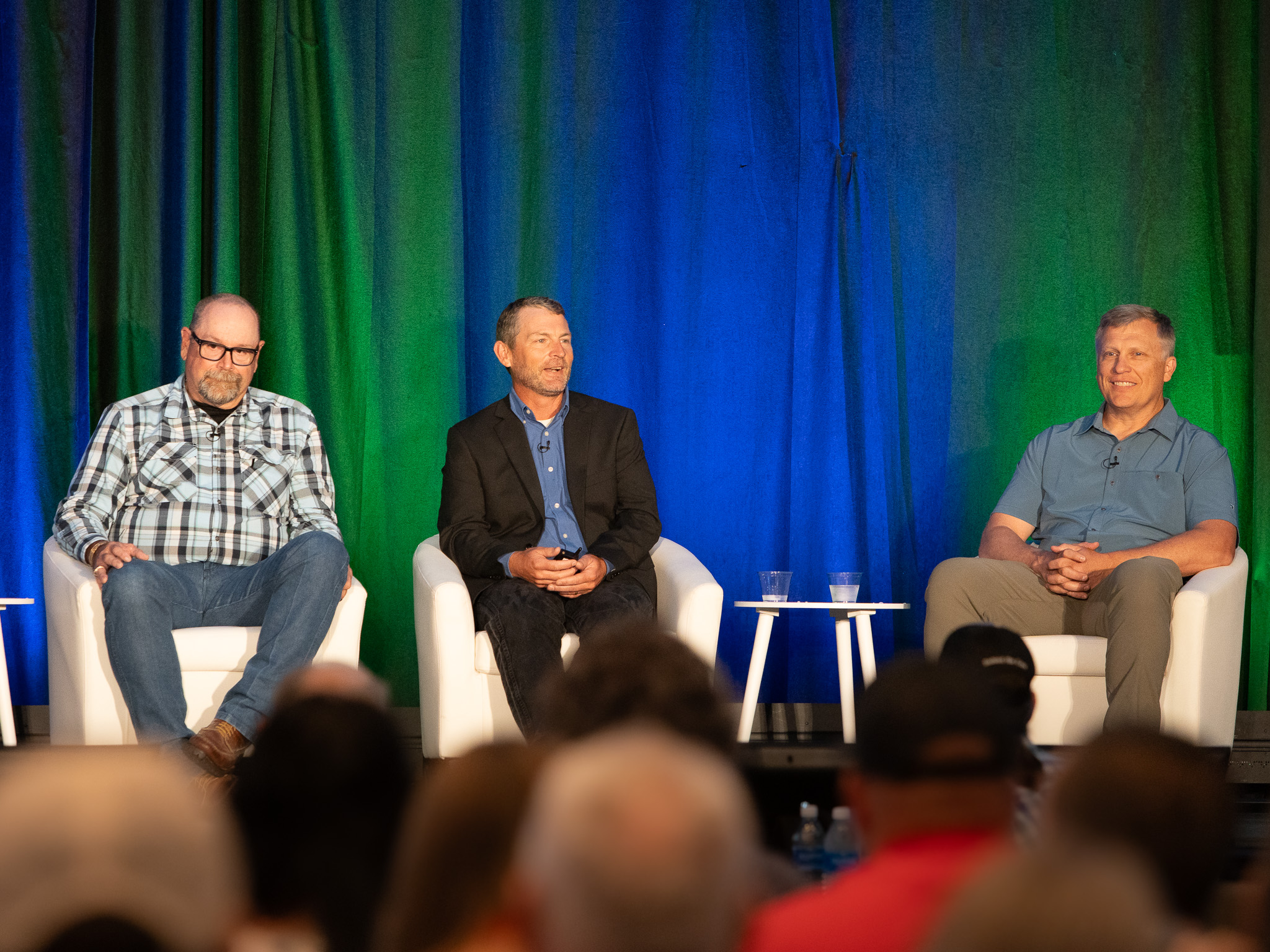Photo: Conservation leaders Tim Griffiths, Western WLFW, Dave Naugle, WLFW Science Advisor and Steve Jester, Partnerscapes shared how today’s conservation strategies came to be and where they are headed.
Almost 300 conservation practitioners and landowners gathered July 12-13 in Manhattan, Kansas for the 10th Western Working Lands for Wildlife Workshop, originally slated for 2020 but delayed for three years due to the pandemic. The workshop included a day and a half in conference as well as an extended field trip through the tallgrass prairie of the Flint Hills. Attendees heard from speakers and presenters including landowners as well as representatives of public agencies, nongovernmental organizations, and universities all united in efforts to sustain grassland and sagebrush steppe landscapes for natural resources and the human communities they include.
New tools were unveiled for the first time that will help both landowners and conservation practitioners plan and implement actions to keep prairies in grass. These tools included a planning and design “pocket guide” for reducing woody encroachment in grasslands, as well as the “Landscape Explorer,” an online tool utilizing historic and modern georeferenced aerial photographs to visualize landscape change in the West over time. Landowners and conservation practitioners were able to discuss and address geography-specific challenges and opportunities in the Southern Great Plains, Northern Great Plains, and Sagebrush Steppe. Participants also heard about the emerging Working Lands for Wildlife framework to sustain big game migration corridors in the West and the integration of the USDA Farm Services Agency (FSA) and associated programs into the USDA Natural Resources Conservation Service Working Lands for Wildlife approach. Look for more information and outputs from the workshop in the near future, and also see this link for some local media coverage of the event.

